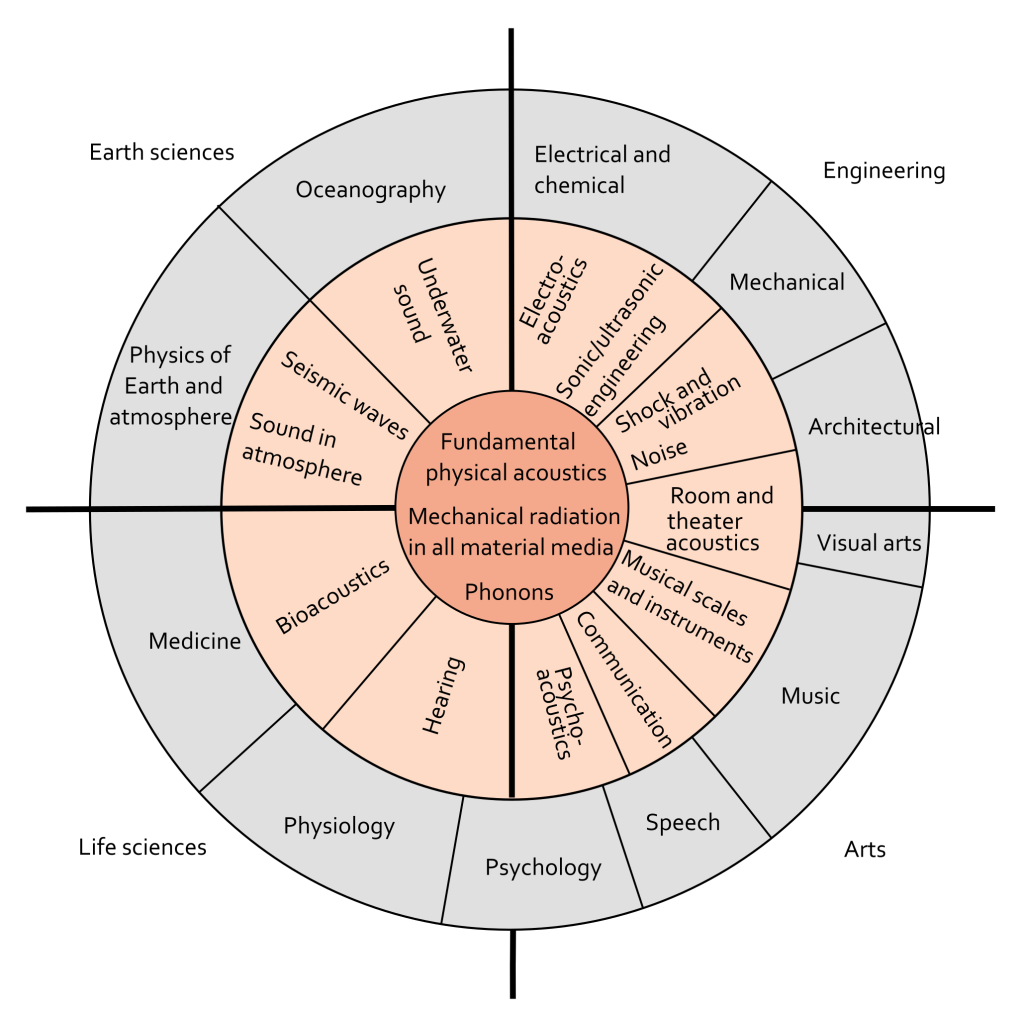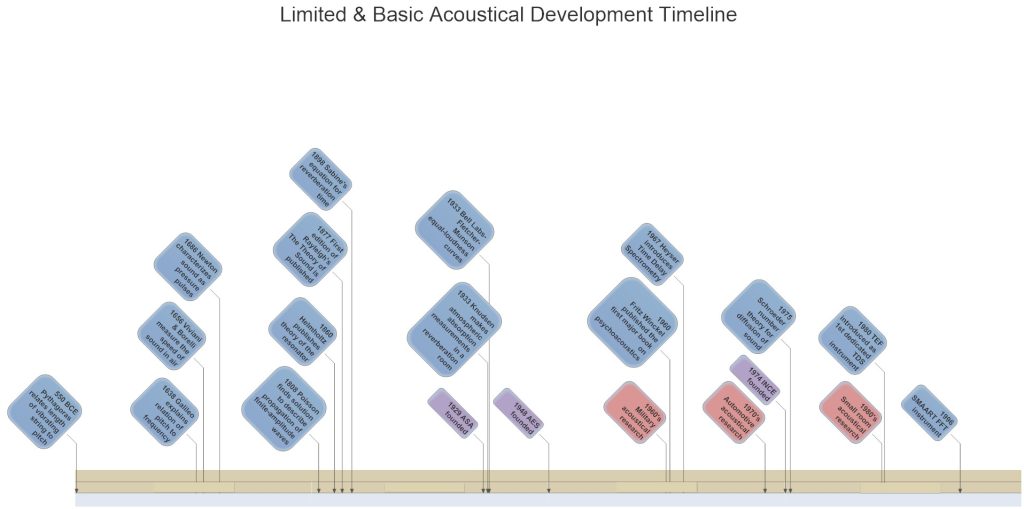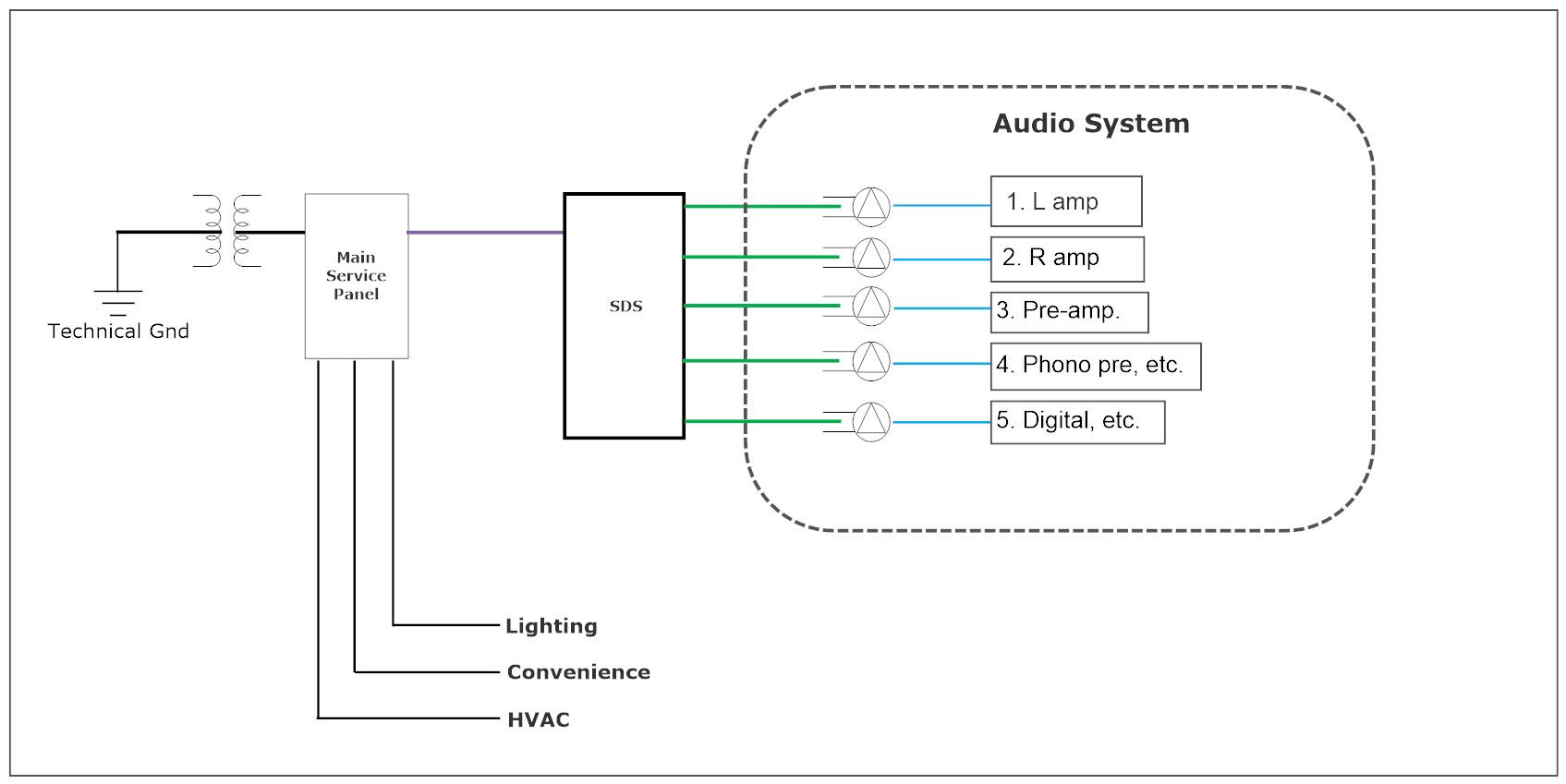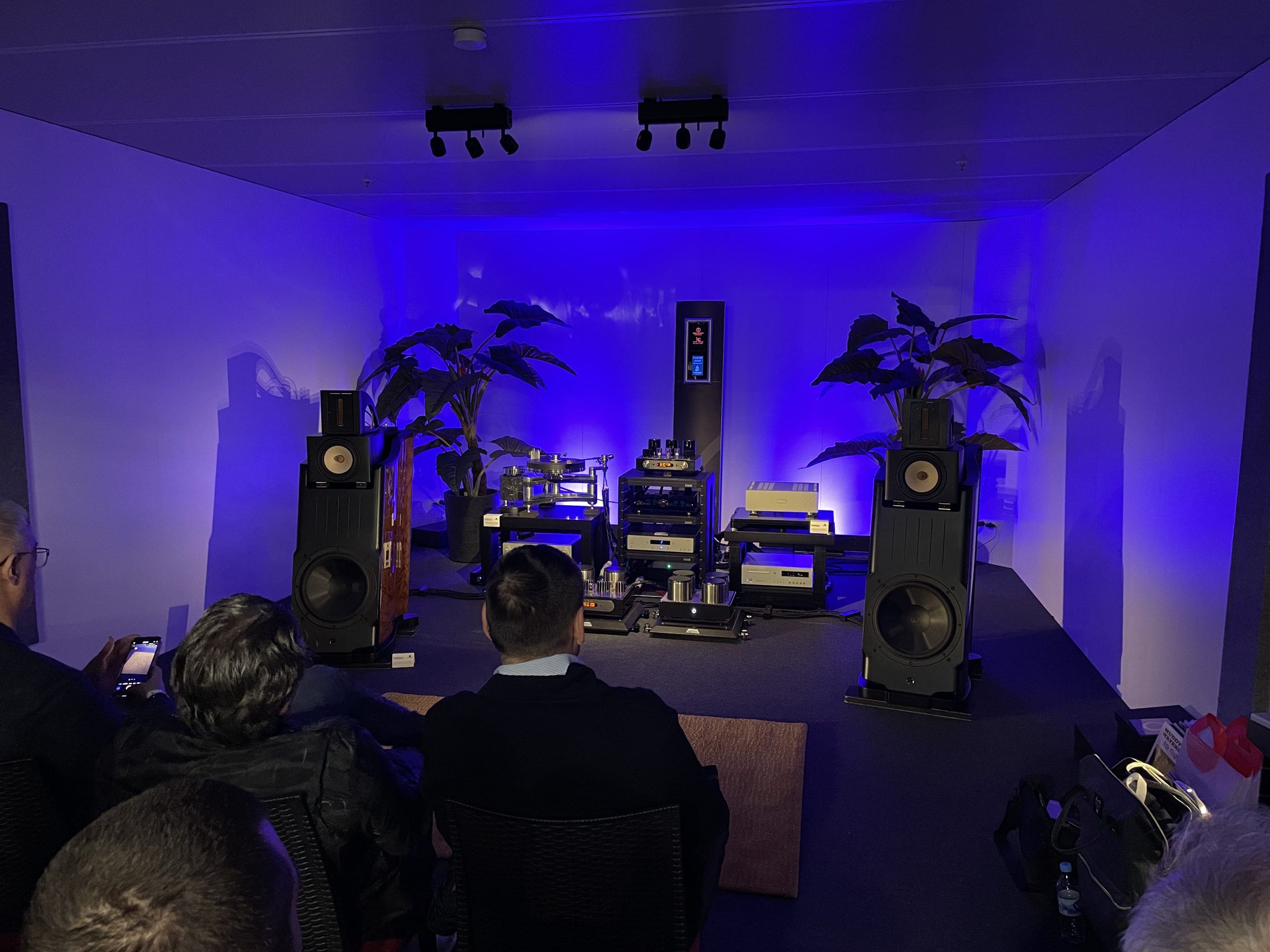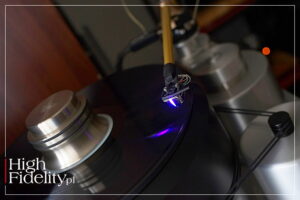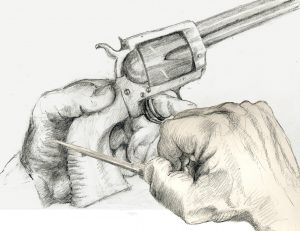Norman Varney of AV RoomService Ltd. has joined Positive Feedback as a Senior Technical Editor as of Issue 113. His expertise in his field of audio acoustics and experience in the field makes him a helpful voice in our creative community for the audio arts. As has been our wont from the beginning of PF, we do welcome contributions from qualified voices in the high-end audio industry, provided that they don't use the opportunity to market their own products/attack competitors and others...which we simply don't allow here.
There is much confusion in the audio "playback" world regarding acoustics. I believe the primary reason for the confusion is that most people don't know that there is established science behind it. It is not as subjective as most people think. There are formulas and procedures to follow. Guessing, will most likely fail you. This article will lightly explain the science over the art.
Acoustics is defined as the science that deals with the production, control, transmission, reception, and effects of sound. Brown University's Professor R. Bruce Lindsay's 1973 Wheel of Acoustics (fig. 1) describes the scope of acoustics starting from the four broad fields of Engineering, Earth Sciences, Life Sciences, and the Arts.
Small room critical listening environments, such as recording control rooms and audio playback rooms incorporate most of the disciplines listed in the wheel. We have come a long way very recently in the fields of acoustics (fig. 2). Especially in just the last 60 years. It wasn't until 1967 that there was enough computer power to begin to investigate the relationships of time, energy and frequency. And then it wasn't until 1980 when Richard Heyser introduced a dedicated Time Delay Spectrometry analyzer that companies could afford such a device, and then develop and share their findings. And only in the last 3-4 decades has neurology and physiology been able to study the living brain and correlate it with perception.
During this time, standards for materials testing labs have been established such as; ASTM, ANSI, and ISO. With behavioral data of how sound propagates in small rooms, and characterizations of materials and assemblies regarding sound energy absorption, transmission and reflection, vibrational resonance and transmissibility, etc., we can apply computer model solutions for acoustic problems, and then confirm, or further investigate them onsite with portable field test equipment. These relatively new developments have really opened the knowledge base. We can characterize and quantize sound in areas that did not exist before I was born. And it will continue to grow as we continue to learn and technology improves further still.
Sound is what happens when air is pushed. Acoustics is the behavior of sound. In our instance, it is how it interacts with the room. Specifically in our instance, it is about the reproduction of music. Even more specifically, it is about how well the equipment is reproducing the music in the room, and being perceived. Your playback equipment and your playback environment are a system. They work together to reproduce the sound waves that reach your ears. However, in a playback environment, we only want to reproduce the performance environment, not add ours to the mix. Ours should not interfere. In a performance venue, reflections support the music, but not so in playback venues. For accurate, consistent reproduction, the chaotic propagation of sound in the space must be controlled.
All the materials of the room's shell and its contents reflect, resonate, absorb, and transmit sound energy. None of these vibrations are part of the original recording, and are unwanted. These vibrations interfere with the original, direct sound from the loudspeakers in the time, energy and frequency domains. Distortions in these domains effect our perception of timbre, dynamics, spatiality, and low-level resolution, etc. Our perception is based on our human physiology, and our individual psychology.
In addition to controlling the original sound propagation within the space, extraneous noise generators such as appliances, HVAC, outside traffic, power noise, etc. are also unwanted vibrations.
In critical listening environments for playback/reproduction of music, the goal is for the room to not interfere with the direct airborne sound waves from the loudspeakers (source) to the listener's ears (receiver). In enclosed spaces, this is impossible to control 100%. There will always be compromises based on constraints from the space's dimensions, construction materials and methods, interior furnishings, etc. that will cause constructive and destructive interference, and/or extraneous noise. There is also the physical set-up of the playback equipment and how it specifically interacts with the environment to consider.
Room acoustics can interfere with all aspects of sound quality, including; articulation, tonal balance, imaging, low-level detail, micro and macro dynamics, etc. There are goals of room acoustic characteristics that are unofficially established, which can be used as a reference base for comparison. Included among these attributes for quality sound in a critical playback environment are the following:
- Even room mode distribution
- Ambient noise floor: RC 20 (N) or less
- Reverberation times: 125 Hz. and above between 0.25 – 0.40 seconds. Below 125Hz. an increasing time slope as frequency descends, not exceeding 0.7 seconds.
- First order reflections are > 15 dB SPL below direct.
- No structural resonances, buzzes or rattles across the audio bandwidth.
The specifications above can be computer modeled, but are best actually measured onsite. Levels below the bar may be audible, which can limit and distort the original intent and experience. Note that typical listening rooms have poor room mode distribution, noise floors of 33-38 dB SPL A-weighted, chaotic reverberation times, audible early reflections, and all kinds of structural resonances, buzzes and rattles.
There are certainly some subjective areas in audio playback to discuss. However, the fundamentals listed should apply regardless of personal 'opinions' or 'preferences.' Such sonic attributes should not be the result of the room acoustics, but solely of the associated equipment and/or its set-up. Such preferences may include; tonal balance, soundstage and image perspective, etc. Though the room can affect these attributes, the goal is that it does not. With a controlled room, these subjective characteristics can be more easily dialed-in. There is no right or wrong regarding an individual's taste in sound quality for enjoyment, however, I do believe that it takes a quality listener years of experience to understand the difference between more accurate, versus simply different.
This is also where some art can be applied. For example: a client may want more pronounced bass response—there are a number of ways to achieve this passively; speaker/listener locations, room dimensions, construction materials and methods, interior acoustic treatments, etc. Maybe the client wants a closer, more intimate soundstage perspective—this can be accomplished with speaker separation and toe-in adjustments, as well as acoustic treatments.
Once the physical characteristics of the room are known, you can begin to assemble the playback environment to handle sound propagation in an organized, controlled manor.
This requires knowledge of how the speaker type disperses sound into the room, the speaker bandwidth, the room volume, its construction and furnishings (material or product noise reduction coefficients from acoustic lab tests), external noise generators (appliances, fans, etc.). The information could be entered into a computer and modeled, or for best results, it is measured onsite. Then solutions are entered in to a computer model and adjusted until optimal results are found. This is done for each of the five sound quality attributes listed above, and others. As a consultant, I would say that most of my time is spent on computer modeling for different areas of the project. Each requires different disciplines. For example; applying interior acoustic surface treatments, you have to know what frequencies you're addressing, their associated wavelengths, where they are most effective in the room and why and how, whether to apply particle pressure or particle velocity for the solution, what type of treatment, how much of it, and where. There is a lot of physics involved. You can't just guess. You are looking for the perfect balance so that the room sounds natural. When you apply this correctly, you can apply it to any room and achieve consistent results predictability and repeatability.
There is a hierarchy to it as well, because everything pretty much affects everything else. In addition, you have to make the course adjustments before you can fine-tune. Let's look at the first two from the list above for examples. The low frequencies are usually the most difficult to control. This is because they have the most energy, the longest wave lengths, and are very influential perceptually. So I typically start there looking at the room modes.
Five Ways to Avoid Room Mode Problems
- Build a room whose dimensions distribute the modes evenly across the low frequency bandwidth (generally < 250Hz.)
- Incorporate resilient construction methods and materials
- Locate the loudspeakers out of their way
- Locate the listener out of their way
- Incorporate the right acoustic room treatments, at the right locations, at the right quantities
Often noise control is the biggest issue. You have to have noise under control before you can address sound quality. Remember that noise is a two-way street; if outside noise can get in and be a distraction, inside noise can get out and a be a distraction to others. Sometimes the noise is generated within the listening space itself, like HVAC, projector fan noise, electrical noise, etc.
Noise can be caused by airborne, or structure borne vibrations. Humans have known tolerances for noise. Once the noise spectrum and levels are established, along with the goal, you can apply solutions to; a) the noise source, b) the transmission path, and/or c) the listener.
Basic Noise Solution Strategy
- Evaluate the noise environment under existing or expected conditions.
- Understand the means of each noise path in terms of octave-band sound levels.
- Measure or model the sound energy levels/spectra contribution of each path.
- Measure or model the total noise octave-band spectrum at the receiver location.
- Determine the acceptable noise level or criterion at the receiver location.
- Obtain the difference between noise energy in step 1c and step 2.
- Prioritize each noise path contribution in regards to the goal.
- Establish physical, budgetary, décor, local code, and/or resource constraints.
- Evaluate various design/material solutions to meet the objective goals.
As you can see, acoustics requires a systematic and scientific approach. Without it, you will likely be chasing your tail forever, never achieving your goals. These goals allow you to realize the full potential of your equipment and investment, and offer the greatest experience. When these goals are not realized, there are limits to the experience. The original sounds are altered, smeared, skewed, and even added to from the structure, other noise generators, which mask low-level details, micro-dynamics, and limit the dynamic range. When the science of acoustics is applied, your equipment is able to perform at its best. As a matter of fact, your equipment's performance (and your enjoyment from it) is dictated by your acoustic environment.




